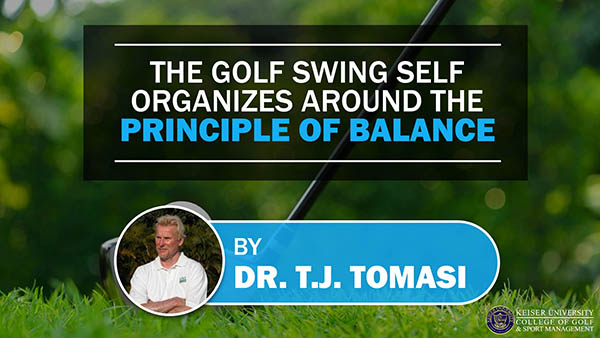The Golf Swing Self Organizes Around the Principle of Balance

By Dr. T. J. Tomasi, Keiser University College of Golf Senior Faculty and Director of Research
Good golf balance involves the channeling of weight flow where ‘weight’ is defined in terms of pressure. Think of it this way: Your weight stays the same on earth no matter what configuration your body is in – standing on one leg, laying down, standing erect, etc.; but the pressure you exert (pounds per square inch) on the earth is always changing based on how your body is deployed. Thus, the pressure is a dynamic force, while weight is static. This is why, in golf spikes, 170 lbs. don’t damage the green, but the golfer of the same weight on a crutch, leaves a trail of holes – demonstrating that pressure is how your weight is concentrated.
Pressure Flow
At address with the irons, the pressure is approximately 50% front foot, 50% back with the toe/heel distribution between the ball of the foot and the heel. At the top of the swing, there has been a pressure change (60/40) with a concentration on the inner edge of the back foot. Front foot concentration is limited to the inner edge around the ball of the foot. Impact studies show a 20/80 distribution with back foot concentration on the inner edge/ball and front foot concentration on the inner edge/ball to heel.
An important role of pressure flow is to allow the body to rotate into the back-hip socket on the backswing (coiling) and into the left hip socket during the downswing – all with minimal disruption of the body. Often a pressure shift is undetectable. If the weight is not flowing into the correct hip socket at the correct time, the swing becomes unbalanced.

As the arm swings and the torso rotates, pressure is automatically pulled into the rear hip.

The arm swing and rotation of the torso puts the pressure in the front hip allowing core rotation – note that you can now see the card in his pocket.
If you’d like to study with Dr. Tomasi and other PGA Master Professionals, contact The College of Golf today.














